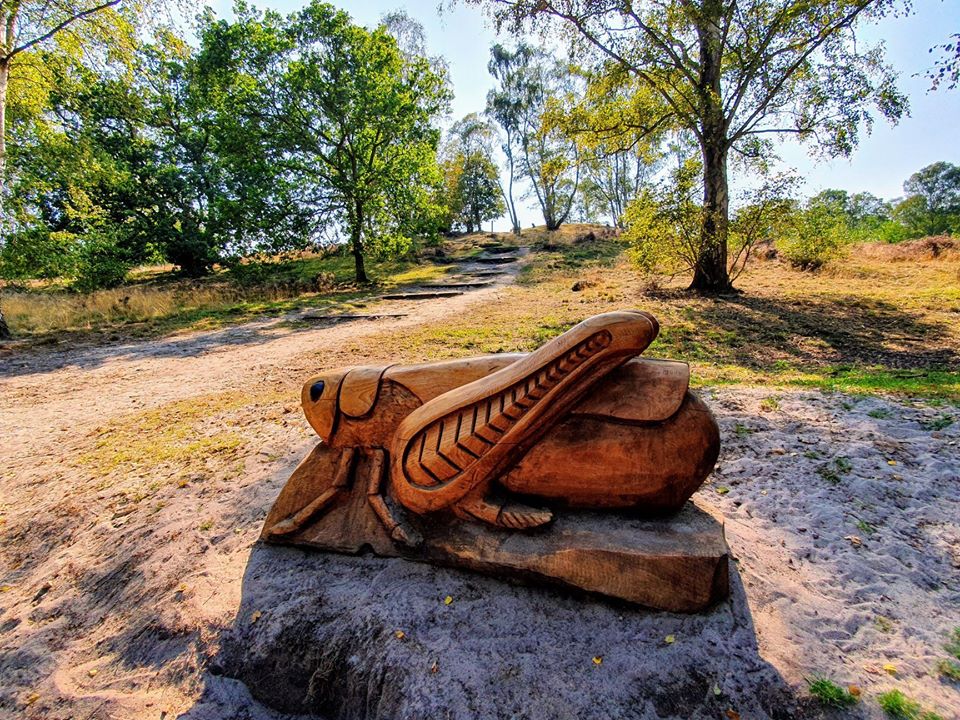Cooper’s Hill, Ampthill






Cooper’s HIll, also known locally as The Firs, is owned by Ampthill Town Council and managed by The Wildlife Trust.
The Trust manage the reserve to maintain a balance between woodland and heath land. Some areas of trees and shrubs are removed to favour the rare open heath. Areas of sandy soil that have become enriched with leaf and bracken litter can be scraped off to reveal the sand beneath which acts as a new seed bed for heather. Some areas of Bracken are cut and pulled annually to prevent encroachment onto the fragile heath. The main areas of woodland which make up over 20% of the reserve are left to mature, although areas of gorse and other low scrub are cut periodically to maintain areas of thick young growth favoured by birds and insects. Heather is best managed periodically to produce growth of varying ages which is able to support a wider range of wildlife. Cutting and grazing of heather and grassland is the most favoured methods of managing the reserve. At 12.5 hectares the reserve is believed to be only just big enough to maintain a viable area of heather and its associated plants and animals, every effort needs to be made to expand the area of the reserve to make its wildlife more resilient in the face of a future of climate change and increased human pressure on the reserve.
What to look for
The sandy soils of the nature reserve support dense stands of common heather or ling which is a scarce plant in Bedfordshire. The reserve is colourful when the heather and gorse is in bloom in summer and provides a home for a number of uncommon plants and insects. Solitary bees and wasps rely on the dry sandy soils for making their burrows as do the bright green tiger beetles that hunt actively over the heath and fly readily once disturbed by the walker. Larger finger-wide holes above vertical tunnels are left by the emerging adult rhinoceros beetle. The open heath has a good population of the mottled grasshopper which is restricted to sandy places. In summer, lizards can be seen basking in the sun, or scurrying through the vegetation.
Down close to the ground, in the bare ground between the heather, can be found a fragile miniature forest of lichens including those with common names such as pixie cap, matchstick and reindeer moss lichen. Within the heather are areas of acid grassland dominated by wavy-hair grass. Oak, birch, gorse and broom grow readily on the heath, their accumulated leaf litter gradually changing the nature of the thin sandy soils so that heather and lichen forests are replaced with grasses and bare ground. Bracken, although an attractive plant, also allows little else to survive beneath it because of its dense shade and build up of decaying stems and fronds. During the last sixty years over 40%of open heather has been replaced by grass, bracken, scrub and woodland. Management is designed to halt and reverse this trend and trees are being felled and grassland managed. Unfortunately in some years, areas of heather become brown and die off; this is due to infestations of the heather beetle that feeds on the roots and stem leaves.
There is a small, acidic mire in the northwest corner of the reserve, formed where water is held above impermeable clay. Moisture-loving plants such as wild angelica and marsh thistle survive here among the willow scrub. The marsh violet just survives here in its last remaining location in Bedfordshire. Areas of birch and oak woodland encourage birds such as great spotted woodpecker, goldcrest and dunnock, while the dense gorse thickets are used by long tailed tits and warblers to feed and nest. The woodland is a good place to look for toadstools in the autumn. Dead birch trees may have brackets of the birch polypore and on the ground can be found the attractive fly agaric. The reserve is well used by the public and there is a good network of paths, some of which have worn into the sandy soil – the resulting low cliff-like edges are used by burrowing insects. The width and number of paths have increased markedly in the last twenty years showing how well visited the reserve is by local people.
Cooper’s Hill was once known as Ampthill Warren. The Normans introduced rabbits to Britain for their meat and fur. Landowners set up warrens on areas of light soil, even digging burrows to encourage the rabbits! The Seventh Duke of Bedford later planted conifers on the heath but these were felled in 1917 to aid the war effort and the heath was then allowed to return to its former glory.
Access
Parking is available in lay-by’s along Woburn Street, or along Station Road. Please park considerately as this is a residential street. Several Public Rights of Way enter the site, including the Alameda path, from the town centre. Please keep your dog on a lead to avoid disturbing the wildlife and enjoyment for other visitors. Cycling is only permitted on the designated bridleway path. Your cooperation is appreciated and we hope you enjoy your visit to Cooper’s Hill.

































